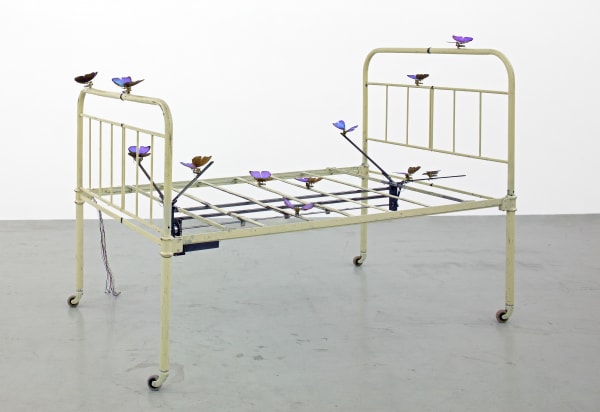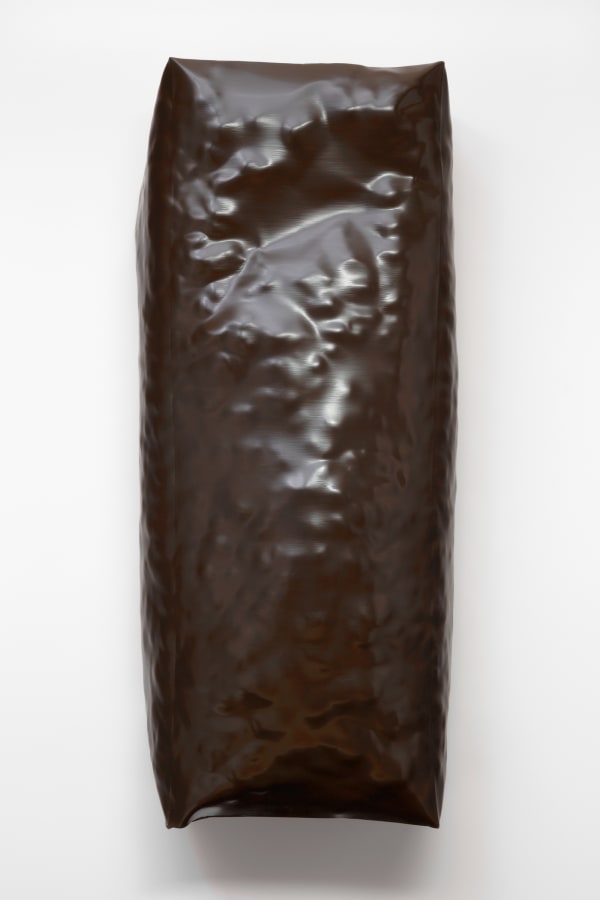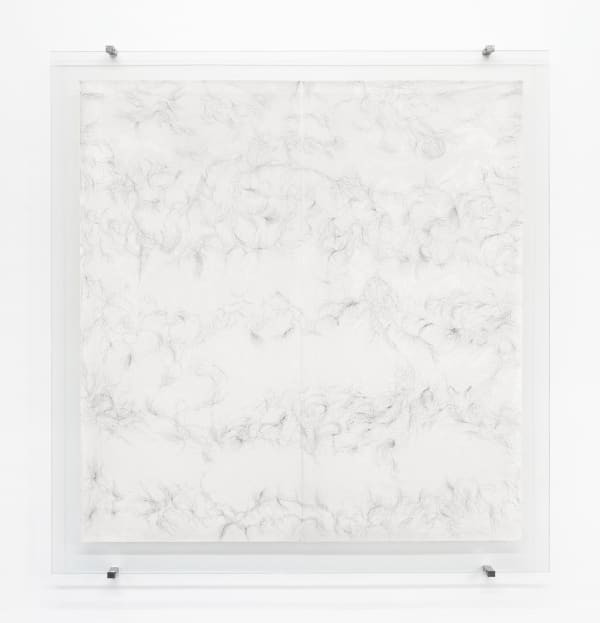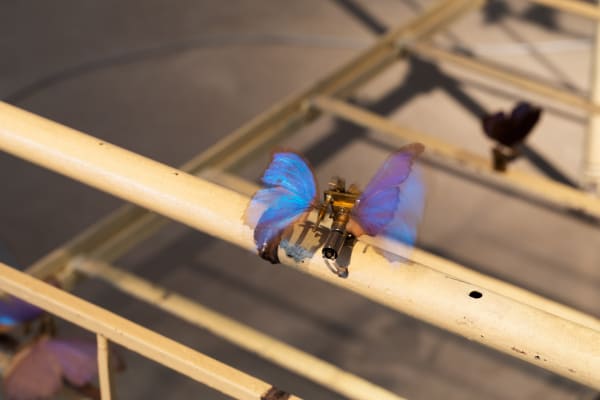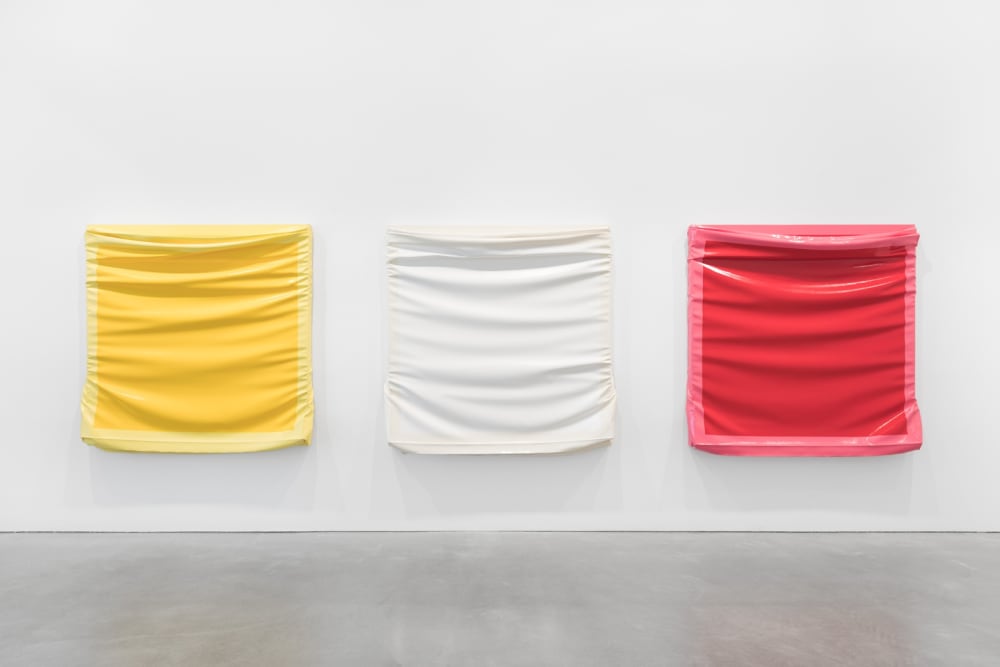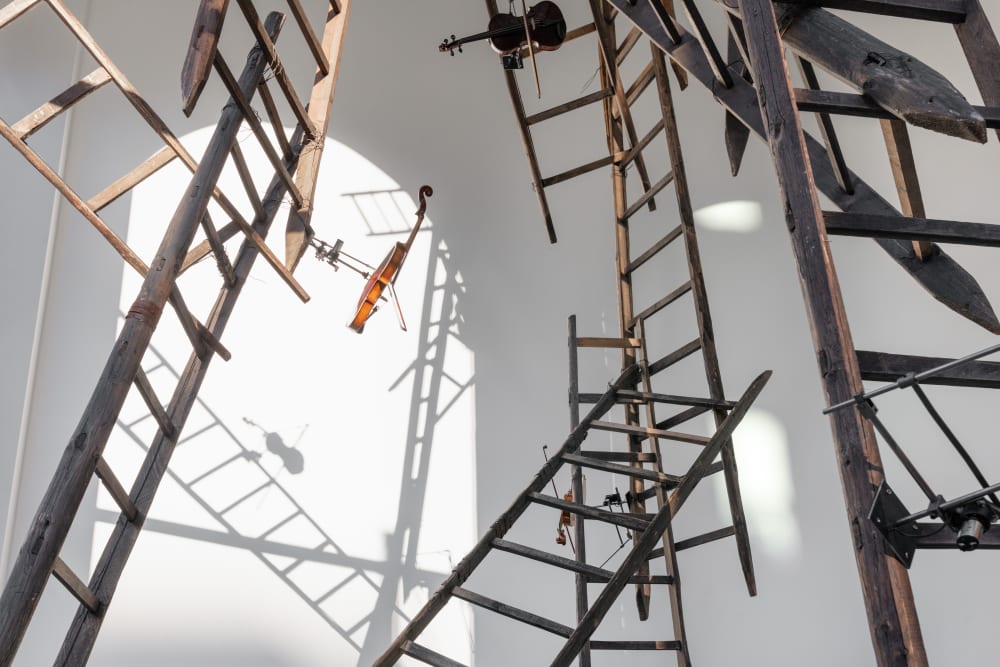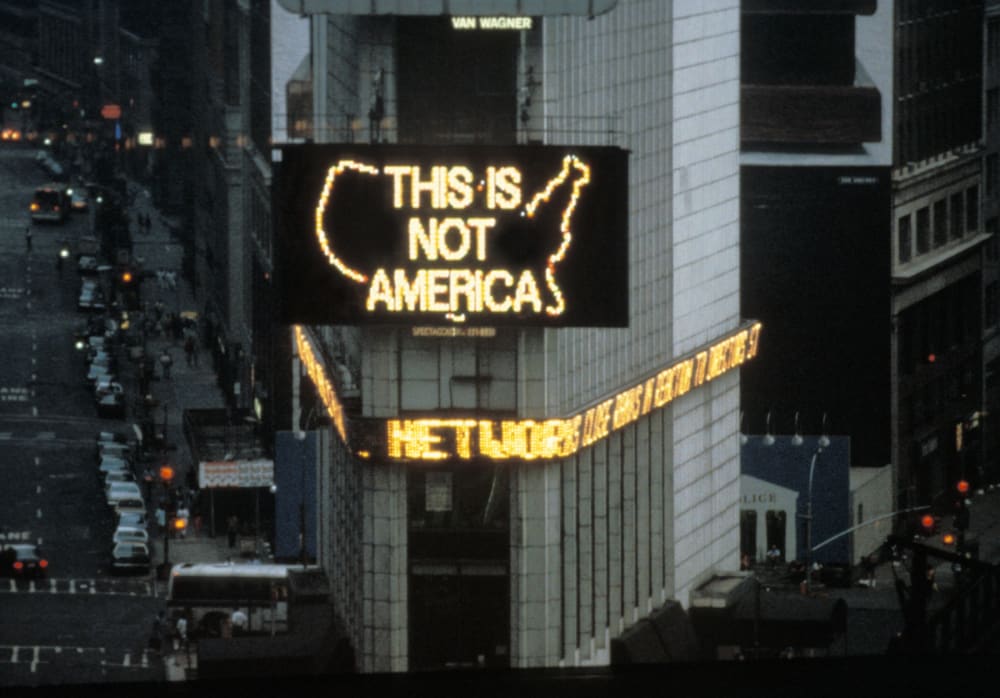LISTEN TO A HEART BEAT: GROUP SHOW
-
Introduction
The group exhibition Listen to a heart beat at Galerie Thomas Schulte brings together works by Dieter Appelt, Angela de la Cruz, Paula Doepfner, Rebecca Horn, Alfredo Jaar, Maria Loboda, Michael Müller, Yoko Ono and Francesca Woodman. While the artists use different approaches and mediums, the works on display all share an atmosphere of reclusion, fragility, disorientation, timelessness and a search for sanity—sentiments we are all experiencing at the moment. Thus, the works complement Allan McCollum‘s installation Everything is Going to be OK, with its theme of consolation, which is simultaneously on view in the gallery’s Corner Space.
The title of the exhibition Listen to a heart beat is borrowed from the book Grapefruit: A Book of Instructions and Drawings by Yoko Ono. Yoko Ono (born 1933 in Tokyo, Japan) began her so-called instruction pieces in the early 1950s. In her book Grapefruit, first published in Japan in 1964 by Wunternaum Press, she compiled instructions for performances and actions that she had been collecting over many years. The first edition thus contains over 150 instruction pieces in English; about a third of them were also translated into Japanese. Grapefruit today is considered an early and famous example of conceptual art, as it contains a series of “event scores“ that replace the physical work of art with instructions.
The photo series by Dieter Appelt (born 1935 in Niemegk, Germany) Der Fleck auf dem Spiegel, den der Atemhauch schafft [Engl. the mark on the mirror breathing makes] (1977) is one of the artist’s most famous works and perhaps his only real self-portrait. In it, we see the artist with his back to the camera positioned diagonally in front of a mirror. The reflection of his face in the mirror is obscured by his breath condensating on the glass. A trace is left on the mirror—a space between reality and image. The resulting picture is thus a temporary, performative record of the self on its way to a vanishing sign. The title of the work quotes the French poet and playwright Raymond Roussel, whose literary work is based on a writing technique of word games and sound associations that is considered the precursor of the Surrealists’ écriture automatique.
The kinetic sculpture The Lover’s Bed (1990) by Rebecca Horn (born 1944 in Michelstadt, Germany) combines theatricality, sensuality and dreamy poetry. A swarm of blue butterflies has settled on the heavy iron frame of a bed painted white. The delicate butterfly wings, however, are driven by motor power and move mechanically, artificially, providing the dreamy image with a melancholic heaviness. The installation was created in 1990 as a prop for the feature film Buster’s Bedroom. Horn’s surreal comedy is about a woman who—out of love for Buster Keaton—finds herself walking in his footsteps in a remote villa in Santa Barbara, the so-called Nirvana House. The villa’s inhabitants turn out to be a strange group of characters who lead a life outside of real time, including a former opera diva living among butterflies.
Hearing the Omniabsence (2019) is a sculpture by Maria Loboda (born 1979 in Krakow, Poland), which on closer inspection turns out to be a sound system covered in artificial snow. The paradox of the word “omniabsent” in the title of the sculpture, serves Loboda to project emotional states lying outside the logic of language and to examine their quality. No one and nothing can be absent everywhere. An electronic device—in the 1980s and 1990s stereo systems were objects of desire with their flashing lights and shiny metal cases—is presented frozen, covered with snow. The cassette deck is gaping open, as if the snow had come out from the inside of the machine instead of music and has silenced it forever. Muted and useless, it is now a modern relic and the metaphor of an impossibility, of “omnipresence” or the search for the eternal in the transitory.
23 Sekunden aus dem Sein eines Steins [Engl. 23 seconds from the existence of a stone] (2013) is a film installation by the conceptual artist Michael Müller (born 1970 in Ingelheim am Rhein, Germany). Installed on the floor, a rattling 16mm film projector projects the looped, 23-second film image of a elongated stone onto a small screen set up on the floor. Film as a time-based medium is taken ad absurdum. The stone itself is a solid, resting body without movement; a solitaire that is several million years old. The clattering, flickering technical image, on the other hand—invented to capture and represent movement—appears in this way to be nothing but a mere shaky, fluttering heartbeat compared to the lifetime of a stone.Paula Doepfner (born 1980 in Berlin, Germany) went to Rome in the summer of 2016 to concentrate for a whole year on working on one special drawing. YOU and ME (Atemzüge eines Sommertags) [Engl. breaths of a summer’s day] is a large-format drawing in ink on Gampi paper, in which letters and sentences float and condense into networks of lines and organic shapes, swirls and clouds. Doepfner has transcribed all of the various drafts of the chapter “Breaths of a Summer’s Day” from Robert Musil’s novel The Man Without Qualities and wrote them in block letters in a font size of one millimeter onto the paper. Even on the day he died, Musil had been working on the chapter, in which the siblings Ulrich and Agathe sitting in a garden continue their conversation about their utopia—a boundless, ecstatic state based on early Christian mysticism and love. With regard to the drawing’s composition, Doepfner’s work is based on Michelangelo’s famous fresco depicting the Last Judgement, while individual sections go back to sketches of the human brain that Doepfner had previously made at the Charité clinic in Berlin.
The illuminated lettering Teach Us To Outgrow Our Madness (1995) by Alfredo Jaar (born 1956 in Santiago de Chile), executed in the artist‘s own handwriting, is part of a whole group of works in which Jaar explores humanitarian crises and the limitations of art in depicting atrocities. The words originate from the poem Commentary (1939) by the British-American poet W.H. Auden and was taken up in 1969 by the Japanese writer Kenzaburo Oe, who used them as the book title for his anthology of short stories. A recurring theme in Oe‘s stories is his attempt to give meaning to the convictions and actions of the war generation, especially those of his own father. With Jaar, a third generation raises the question of responsibility for the atrocities in this world.
In her works Angela de la Cruz (born 1965 in La Coruña, Spain) engages with the discourse of painting by focusing on the physical anatomy of painting and expanding it into a three-dimensional form. Canvases and stretcher frames are cut, torn and broken for this purpose. They subsequently emerge as objects with a distinctly corporeal appearance. The painted brown 1.80-meter tall sculpture Bloated (Mud) (2012) made of aluminum hangs bulbous and bruised on the wall. As in many of her works, the sculpture evokes a feeling of tension and violence that contrasts with the idea of the contemplative and meditative process of painting. De la Cruz‘s works thus become representations of materiality and body, suspended between strength and fragility, between beauty and brokenness, tension and relaxation.
The small square black-and-white photographs were created by the American artist Francesca Woodman (born in Denver, Colorado in 1958; died in New York in 1981), who, almost 40 years after her untimely death, is being exhibited widely and internationally. In her pictures, Woodman combines a special instinct for aesthetic and enigmatic pictorial inventions with a profound knowledge of iconographic themes. To realize her pictorial ideas, Woodman used her own body and staged herself in unusual ways using an auto release: For her photographs, she adopted surrealist strategies, arranged objects in space, placed them in relation to each other, thus creating new levels of meaning that arise from the novel relationships between them.
-
Works
-
Installation Views
-
Inquire about the exhibition

-
Video
-
Artists on view

